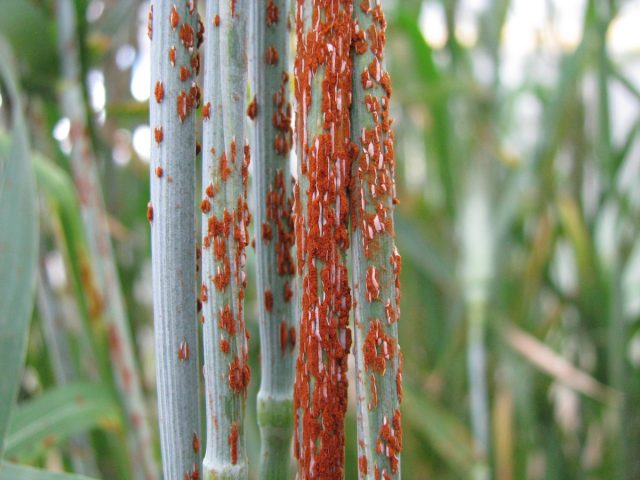
Currently, roughly 20 percent of humanity's caloric intake comes from wheat. Agricultural strains, specialized for bread or pasta production, have been bred for high productivity and resistance to many agricultural pests. But over the past few years, one of those pests, a fungus called wheat stem rust, has evolved the ability to overcome wheat's defenses. Dangerous strains of wheat stem rust were first spotted in Uganda, but are now present elsewhere in Africa, in Yemen, and in some areas of Iran. That's set off an international scramble to find ways of generating a resistant wheat before the rust spreads any further.
By working with uncultivated relatives of agricultural wheat, two teams of scientists have identified a pair of genes, each of which provides partial resistance to the new strain of stem rust. Although each gene can be bred back into commercial wheat strains, the combination of the two is likely to be even more potent, so the researchers are considering putting them on a single DNA construct and then engineering that into various agricultural strains.
Wheat stem rust infections severely limit the plant's productivity and can kill it in severe infections. In the early 1900s, outbreaks in the US would routinely destroy a double-digit percentage of the nation's harvest. The breeding of resistant strains of wheat was therefore a major accomplishment. In 1999, however, researchers in Uganda discovered a new strain of stem rust (Ug99) that could infect resistant crops. Since then, the fungus has spread to other parts of Africa, and resistant strains have been spotted in the Middle East. Tests indicate that roughly 90 percent of the currently cultivated wheat strains are vulnerable to it. In 2005, a group was formed to coordinate international efforts to breed a resistant crop.
Fortunately, a significant number of wild relatives of wheat, along with strains that are no longer cultivated, have been maintained. Current agricultural strains are hexaploid, meaning they have six sets of chromosomes instead of the usual two (the extra chromosomes affect wheat's growth and seed production), with two sets each coming from three different wheat strains. One of those three strains turned out to be partially resistant to the Ug99 strain; in another case, a wild relative of another strain that contributed chromosomes to commercial wheat turned out to be resistant. The genes involved are Sr33 and Sr35, respectively.
Since those discoveries, scientists have been doing the painstaking task of breeding the individual genes back into non-resistant strains of wheat and generating a genetic map to identify where it resides in the genome. Once they had narrowed it down to a handful of genes, they took a resistant strain and exposed it to mutagens. Some of the wheat offspring became susceptible to Ug99 again, and DNA sequencing revealed the specific gene that was mutated, allowing researchers to identify the source of resistance.
Both Sr33 and Sr35 turned out to be related to a large family of pathogen resistance genes in plants, all of which share the ability to bind nucleotides like ATP and have a long stretch that allows two of them to wrap around each other in what's called a coiled-coil. In each case, the genes were part of a cluster of related resistance genes; recombination among them appears to help create a diverse set of resistance proteins.
The previous breeding work shows that these genes work when bred into other strains of wheat, but one of the studies went well beyond that, cloning Sr35 and inserting it into a gene transfer vector. When the DNA for the vector was inserted into a new strain of wheat, some of the offspring were resistant to Ug99.
The authors of both papers suggest that having both Sr33 and Sr35 present is more likely to provide full resistance to Ug99, and limit the stem rust fungus from evolving tolerance a second time. But it would take years to breed just one of the genes into a commercial wheat strain, and then breed back the strain's useful agricultural properties. So, the papers advocate putting both Sr33 and Sr35 into a gene transfer vector, and doing some genetic modification of existing wheat strains. That process would greatly accelerate the full availability of resistant strains.
People who advocate for genetically modified foods like these are often portrayed as advocates of industrialized agriculture and opponents of traditional farming. But, in this case, the results of the genetic engineering are most desperately needed in Africa, where agriculture is far less industrialized. The authors also recognize that the maintenance of a variety of wheat strains was absolutely essential to their ability to identify resistant strains and thus the resistance genes. As such, they state that their work "highlights the value of wheat landraces and wild relatives as a reservoir of novel resistance specificities." We'll need to maintain them if we hope to be ready for when the next threat comes along.
Science, 2013. DOI: 10.1126/science.1239028, 10.1126/science.1239022 (About DOIs).
reader comments
50